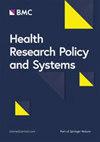Catastrophic health expenditure of inpatients in emerging economies: evidence from the Indian subcontinent
IF 3.6
2区 医学
Q1 HEALTH POLICY & SERVICES
引用次数: 0
Abstract
Catastrophic health expenditures condensed the vital concern of households struggling with notable financial burdens emanating from elevated out-of-pocket healthcare expenditures. In this regard, this study investigated the nature and magnitude of inpatient healthcare expenditure in India. It also explored the incidence and determinants of inpatient catastrophic health expenditure. The study used the micro-level data collected in the 75th Round of the National Sample Survey on 93 925 households in India. Descriptive statistics were used to examine the nature, magnitude and incidence of inpatient healthcare expenditure. The heteroscedastic probit model was applied to explore the determinants of inpatient catastrophic healthcare expenditure. The major part of inpatient healthcare expenditure was composed of bed charges and expenditure on medicines. Moreover, results suggested that Indian households spent 11% of their monthly consumption expenditure on inpatient healthcare and 28% of households were grappling with the complexity of financial burden due to elevated inpatient healthcare. Further, the study explored that bigger households and households having no latrine facilities and no proper waste disposal plans were more vulnerable to facing financial burdens in inpatient healthcare activity. Finally, the result of this study also ensure that households having toilets and safe drinking water facilities reduce the chance of facing catastrophic inpatient health expenditures. A significant portion of monthly consumption expenditure was spent on inpatient healthcare of households in India. It was also conveyed that inpatient healthcare expenditure was a severe burden for almost one fourth of households in India. Finally, it also clarified the influence of socio-economic conditions and sanitation status of households as having a strong bearing on their inpatient healthcare.新兴经济体住院病人的灾难性医疗支出:来自印度次大陆的证据
灾难性医疗支出凝结了因自付医疗支出增加而承受显著经济负担的家庭的重大关切。为此,本研究调查了印度住院医疗支出的性质和规模。研究还探讨了住院灾难性医疗支出的发生率和决定因素。研究使用了第 75 轮全国抽样调查中收集的微观数据,涉及印度 93 925 个家庭。研究使用了描述性统计来考察住院医疗支出的性质、规模和发生率。应用异方差概率模型探讨了住院灾难性医疗支出的决定因素。住院医疗支出的主要部分是床位费和药品支出。此外,研究结果表明,印度家庭每月消费支出的 11% 用于住院医疗保健,28% 的家庭因住院医疗保健支出增加而面临复杂的经济负担。此外,研究还发现,人口较多的家庭以及没有厕所设施和适当废物处理计划的家庭更容易在住院医疗活动中面临经济负担。最后,这项研究的结果还确保,拥有厕所和安全饮用水设施的家庭可降低面临灾难性住院医疗支出的几率。印度家庭每月消费支出的很大一部分用于住院医疗。研究还表明,住院医疗支出是印度近四分之一家庭的沉重负担。最后,研究还阐明了家庭的社会经济条件和卫生状况对住院医疗保健的影响。
本文章由计算机程序翻译,如有差异,请以英文原文为准。
求助全文
约1分钟内获得全文
求助全文
来源期刊

Health Research Policy and Systems
HEALTH POLICY & SERVICES-
CiteScore
7.50
自引率
7.50%
发文量
124
审稿时长
27 weeks
期刊介绍:
Health Research Policy and Systems is an Open Access, peer-reviewed, online journal that aims to provide a platform for the global research community to share their views, findings, insights and successes. Health Research Policy and Systems considers manuscripts that investigate the role of evidence-based health policy and health research systems in ensuring the efficient utilization and application of knowledge to improve health and health equity, especially in developing countries. Research is the foundation for improvements in public health. The problem is that people involved in different areas of research, together with managers and administrators in charge of research entities, do not communicate sufficiently with each other.
 求助内容:
求助内容: 应助结果提醒方式:
应助结果提醒方式:


